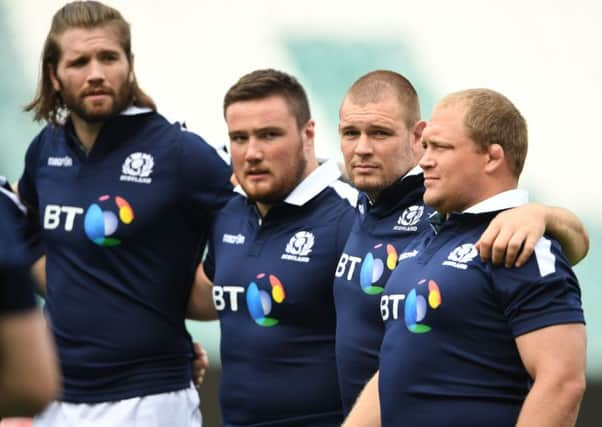Allan Massie: Strength in depth '“ a new quality for Scotland


Eight changes from the side that beat Italy comprehensively in Singapore last week may be surprising, but it was always likely that Gregor Townsend would want to give everyone in his touring party an outing in at least one of the three Tests. The selection also shows how far we have come in the last few years. Consider the absentees from the back division: Stuart Hogg, Tommy Seymour, Tim Visser, Huw Jones, Mark Bennett and Greig Laidlaw. The first five have all scored lots of international tries, Hogg, Seymour and Visser more individually than anyone in the last 30 years except Tony Stanger and Chris Paterson. Laidlaw has been an outstanding scrum-half and captain. And yet – tempting fate perhaps – it was possible to approach a match against Australia with reasonable confidence, even if only Finn Russell in the back division would be certain to start a Test match if all players were available.
I say “only Finn” because even Greig Laidlaw’s position is now being challenged hard by young Ali Price, who has eagerly and successfully taken the opportunity given him by Laidlaw’s unfortunate injury in Paris. They are different sorts of player and, while some may think that Price’s zest and attacking flair may be better suited to the style in which Gregor’s teams generally play, there will be others who think that Scotland may benefit more from Laidlaw’s unruffled calm and superior game-management.
Advertisement
Hide AdAdvertisement
Hide AdThen the young wing Damien Hoyland had a very fine match in Singapore, the best I’ve seen him play since Edinburgh’s exhilarating defeat of Harlequins at Murrayfield last autumn, but was not picked for the Australian game, being replaced by Lee Jones. This was apparently a decision made in advance of the Italy game. Jones has played very well for Glasgow this spring, being one of the rather few who came out of the Champions Cup quarter-final against Saracens on the credit side. It has been a long way back for him after winning five caps when Andy Robinson was coach in 2012. An injury cost him his place in that year’s summer tour, and he fell out of favour at Edinburgh, Alan Solomons telling him he preferred big wings. So he spent a couple of years mostly on the Sevens circuit – unlucky again not to make the UK squad for the Rio Olympics – before re-establishing himself at Glasgow. I’m prejudiced because I’ve known, watched him, and admired his play since he was a boy, but to come back on merit after five years away from the Test arena is no mean achievement; it speaks of character as well as talent.
It’s now generally recognised that you need two complete front-rows, since hookers and props almost never play 80 minutes.With Willem Nel recovered from injury we now have that, and the Singapore front-row starts on the bench in Sydney. We couldn’t have contemplated that even a couple of years ago. It’s the same at lock with Richie and Jonny Gray, Tim Swinson and Ben Toolis and in the back-row with John Barclay, Ryan Wilson, Hamish Watson, Josh Strauss, John Hardie, Rob Harley and now Magnus Bradbury.
It’s sometimes said that, given the frequency of injuries in rugby today, a country needs three players of Test match quality for every position. We’re not quite in that position yet, but we are closer to being there than we have ever been. There are only two or three players one might deem indispensable, in that their absence would materially weaken the team.
Moreover, there is good stuff coming through. For years we accepted, ruefully, that our age-group sides would lose far more often than they would win. This is no longer the case, thanks in large measure to the work done as coaches, first by Sean Lineen and now by John Dalziel. Our under-20 side is going to finish fifth or sixth in the Junior World Cup rankings, its highest ever position. Even more pleasingly it hasn’t been eking out victories by stout defence and kicking penalties, but has been playing with imagination and style and scoring tries from all parts of the field.
Indeed with the academies now evidently working well, there seems to be so much talent coming through that there is the danger of a log-jam, especially since it’s recognised everywhere that successful professional clubs will always require a few players not qualified to represent the country where the club is based. Still this is a better problem that the one we used to have: maintaining a professional game with too few players of the required standard.